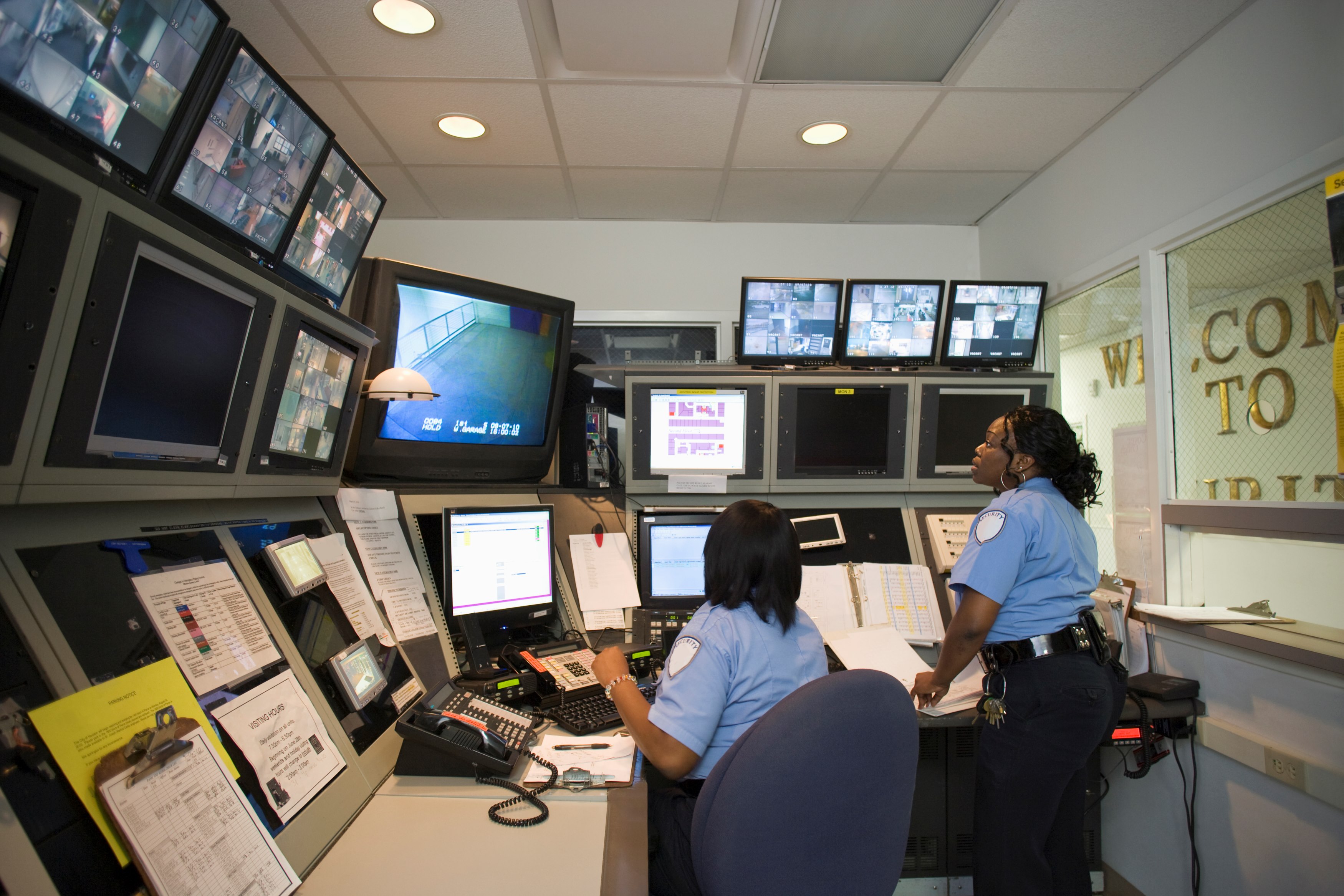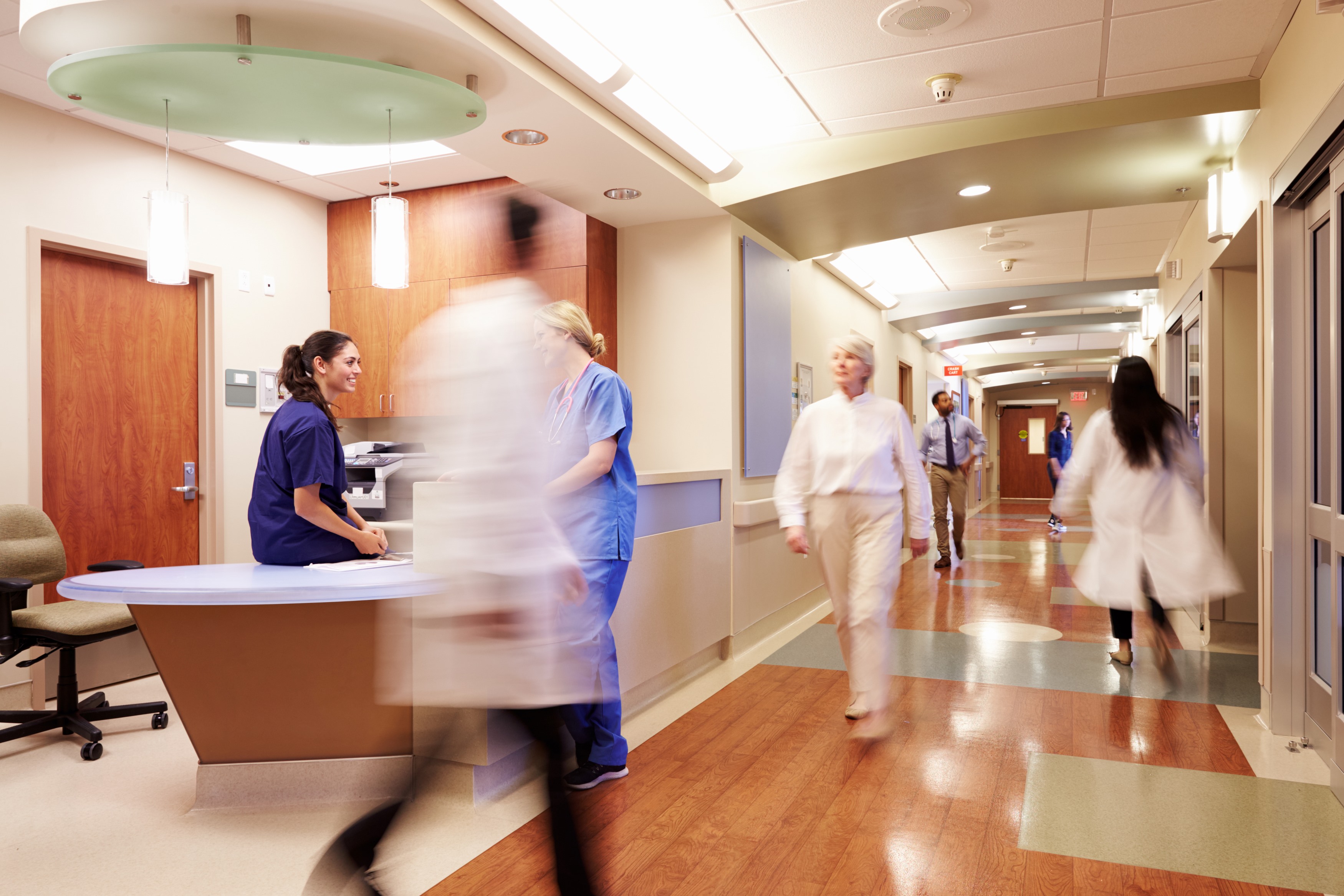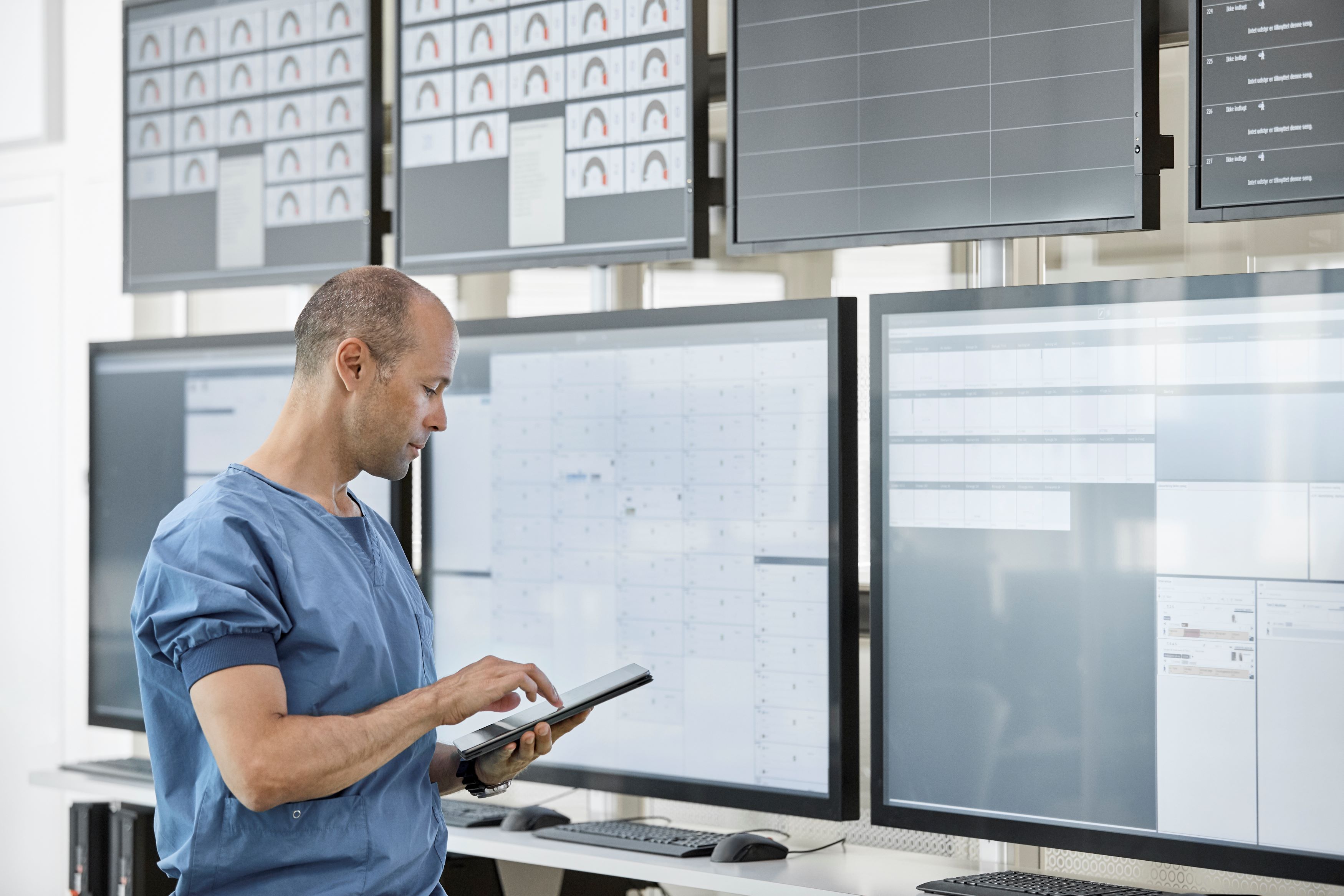Maintaining exceptional patient care with video analytics in healthcare
Want to enhance patient care and staff safety at your healthcare facility? Learn how combining video analytics and decision support systems can help.

The healthcare industry has always been at the forefront of technological innovation. Whether it’s new treatment protocols, or high-tech medical equipment, hospitals and healthcare centers are ready to invest to enhance patient care.
More recently, healthcare facilities have faced several new challenges such as compromised patient safety, ambulance bay bottlenecks, and a rise in workplace violence.
Learn how combining video analytics and a collaborative decision management system provides an additional layer of security to patients and healthcare professionals. These technological investments also help management teams enhance operations and improve patient safety.
Safety challenges in the healthcare industry
According to the World Health Organization, one in every 14 patients is harmed while receiving hospital care. While this varies between countries, keeping patients safe has become one of the top priorities for global healthcare facilities.
Hospital security staff work around the clock to minimize instances of violence and neglect while also constantly monitoring those who are ill, recovering, or lack mobility and need assistance.
When there are incidents that compromise safety, patient health and care suffer. These incidents can also negatively impact the healthcare facility’s reputation. Without proper security measures in place to address incidents, a healthcare facility can be subject to hefty liability claims.
According to the US Bureau of Labor Statistics, healthcare workers are five times more likely to suffer a workplace violence injury than workers overall. These workers are often dealing with critical, high-stress situations, or treating patients with mental health issues. This makes them more susceptible to aggressive behaviors from patients or visitors. In more recent times, gun violence in hospitals has escalated, heightening stress and safety concerns for these hardworking staff members.
Being able to quickly identify and address threats before they become bigger issues is critical to maintaining exceptional care. It can also help healthcare organizations save money. According to the Agency for Healthcare Research and Quality, investments made to minimize patient safety incidents led to an estimated $28 billion USD in savings across Medicare hospitals in the US.
Balancing security and operational efficiency at hospitals
Even with these primary security concerns being prioritized, healthcare organizations also tackle operational issues. Bottlenecks in an ambulance bay or emergency department coming from overcrowding or staffing issues, can create delays for incoming patients needing critical care.

Within the hospital environment, sensitive areas also need to be secured. From medicine cabinets and server rooms to contained clean rooms, keeping these spaces free from intrusion and unauthorized access is critical.
Healthcare facilities need to secure assets and narcotics and ensure compliance with various regulations. But they also need to protect individual privacy and keep all medical records and patient information out of the wrong hands.
While video surveillance helps to address these challenges, many healthcare facilities have older systems in place. That means they may not know if a camera goes offline. Also, older video systems may not have the investigative tools needed to quickly find information and get to the bottom of incidents. All of this leads to gaps in security and impacts a healthcare provider’s ability to create an efficient environment.
How can healthcare organizations get better visibility on critical security and safety issues, while ensuring compliance and excellent care? Learn how video analytics can help.
The benefits of video analytics in healthcare
In such a fast-paced environment, security incidents can happen in a split second. Using video analytics, teams can quickly detect potential issues and act fast to mitigate risks.
From intrusions and patient falls to overcrowding in emergency rooms or random acts of violence, teams can be notified when something needs their attention. They can then initiate a response, dispatch nurses or guards, or advise managers of congestion to take action.
Below are a few key examples of how video analytics can support healthcare security teams:
Ensure entire healthcare environments are safe
Using video analytics, your healthcare security team can quickly detect instances of theft, violence, or intrusion. For instance, using gunshot sound detection analytics or visual gunshot detection analytics, your operators can spot serious threats right away.
You can also set up crossline detection analytics to catch when people enter or are near sensitive areas such as medicine dispensaries, equipment storage rooms, or contaminant-free zones. View live video to monitor processes and ensure everyone remains compliant.
Intrusion or loitering analytics work in the same way, alerting your team to suspicious behaviors that they might want to keep an eye on. If a serious incident is underway, they can then quickly address the situation before it escalates and compromises patient and worker safety.
Minimize overcrowding in emergency areas
Using crowd estimation analytics, your team will know when the emergency room is filling up. Set thresholds for the maximum number of people in advance, so your staff is alerted when a facility reaches the threshold. They can then notify floor managers who can dispatch more nurses and staff for patients needing critical care.
Effective emergency response means ambulances must be able to arrive and depart quickly. With object detection analytics or automatic license plate recognition, hospitals can monitor the occupancy levels of ambulance bays to prevent traffic jams and blockages.
Your team can also review historical data to identify peak days and times and assess how quickly ambulances were able to get in and out of an emergency area. You can then adapt processes or staffing levels to meet demand and enhance overall critical care services.
Enhance operational efficiencies and emergency services
People counting analytics is another great tool in hospitals or healthcare centers. These video analytics provide real-time data on foot traffic and patient flow. Your team can use this information to better understand how people use and move about your facilities. From there, they can make informed decisions about improving the facility layout or operational workflows to minimize congestion and heighten efficiency.
Using video analytics, your team can receive alerts when a hallway or lobby is congested or blocked and dispatch staff to alleviate the issue. Clearing out crowds ensures that medical staff can move swiftly through your building and get their jobs done. It also allows patients to easily navigate intake processes, reducing wait times and enhancing service.
Strengthen compliance with health mandates
Even though the number of patients from the health crisis has decreased, healthcare providers must still be prepared when outbreaks occur. That means ensuring processes are in place to comply with health mandates and keep staff and other patients safe.
Using video analytics, healthcare providers can monitor social distancing or run non-contact thermal screening. They can also use real-time people counting to automatically track the number of people entering a medical facility. The system will then notify personnel when the space reaches full capacity so they can enforce social distancing measures.
You can also integrate people counting analytics with a SIP-based intercom module to facilitate automated public announcements. When analytics notify your team that a capacity threshold has been met, the intercom system will automatically deliver a public announcement indicating that a new room or lobby is available or that no more visitors are allowed to enter the area.
Monitor patient safety in acute or intensive units
Dealing with staff shortages is difficult enough for hospitals and healthcare facilities. But when there’s an increase in healthcare needs, the stress can take its toll on workers. Finding more efficient ways to monitor patients and handle tasks helps nurses and other hospital staff work smarter.
Using video analytics, you can monitor intensive care patients requiring more attention and hands-on care. Set up perimeter protection analytics and create defined zones for each patient’s room or area. If the patient leaves their room or the designated area, the system will notify nurses and provide live video so they can quickly see what’s happening.
How do video analytics and a decision management system improve operations
There's no denying the truth—while video analytics can help your team become more proactive at detecting and addressing threats, they can also become overwhelmed by all the alarms and event notifications.

Implementing a decision management system alongside video analytics solutions takes that burden of constant verification off your team’s shoulders.
Genetec Mission Control™ is a collaborative decision management system that gives operators new levels of situational intelligence, visualization, and complete incident management capabilities. It can automatically analyze data and alarms across your security and operational systems, and point operators to the most pressing situations.
A decision management system helps minimize operator stress and empower them with insights that they can act on. They’ll also be guided through response procedures, handling any incident with ease and confidence. Here are some examples of how video analytics and a decision management system can support your teams:
Automate routine tasks
Streamline operations by automating routine tasks and flag issues that require immediate attention. Retrieve historical reports to identify gaps in security, identify opportunities to improve processes, and streamline patient safety and care.
Personalize patient care
Monitor patients effectively with automated tools that help nurses stay on top of safety issues. Know immediately when a patient falls from a bed, enters a restricted area, or leaves a specific unit.
Optimize staff resources
Send automatic notifications to healthcare managers when a high volume of people enter the emergency department. Review historical data to identify the busiest periods to better allocate staffing resources.
Some limitations of video analytics in healthcare
Although using video analytics offers valuable insights and great benefits for healthcare professionals, there are a few limitations that should be considered:
 Intrusion of privacy
Intrusion of privacy
Collecting and analyzing information about patients and visitors can raise concerns about privacy and data security. There are also ethical concerns about the potential misuse of data and violation of patient autonomy. This is why keeping patient identities and data safe is critical for healthcare providers.
Deploying video analytics with privacy in mind can help reduce these concerns. This involves implementing video analytics with full transparency along with having well-defined objectives and policies around how data is collected, stored, and used.
Video footage can also be pixelated using Privacy Protector analytics. This allows security staff to monitor live or recorded video while blurring anything that isn’t the static background to protect the identities of individuals. Should an incident occur, supervisors can access the unblurred footage.
 Limited compatibility
Limited compatibility
Different video analytics systems may use different standards and protocols. This can make it difficult to fully integrate various tools with other security systems or healthcare technology.
Choosing an open security platform means you can easily merge video surveillance with analytics and other systems. You’ll also be able to add new AI-powered solutions as they come to market. All data and video come into one pane of glass, helping your team to work more efficiently and get the information they need to make decisions.
 Unrealistic expectations
Unrealistic expectations
Video analytics systems can monitor and analyze a large amount of visual data from multiple surveillance cameras at once. But a common misinterpretation is that such a software can be depended on to accurately detect every single incident or risk in a busy hospital environment.
Technical limitations such as the number and placement of cameras, the quality of the video and cameras, and the complexities of interpreting visual data all come into play. Incidents can occur outside the camera’s field of view—meaning the video analytics system wouldn’t detect the event.
While video analytics can help operators spot issues faster, your security team still plays a valuable role in detecting risks across your healthcare organization.
See more across your environment with video analytics
Video analytics offer tremendous value to healthcare providers. From people counting and crowd estimation to intrusion detection, video analytics enhance automation across all tasks. They not only help your team quickly detect acts of violence, patient safety concerns, and suspicious behaviors. Advanced video analytics gives you the information you need to keep improving your healthcare operations and processes to offer exceptional care.
Combining analytics with a decision management system takes automation and efficiency to a whole new level. It helps healthcare providers improve patient and staff safety, enhance critical care service, strengthen compliance, and report on operational efficiencies that can lead to big savings.
